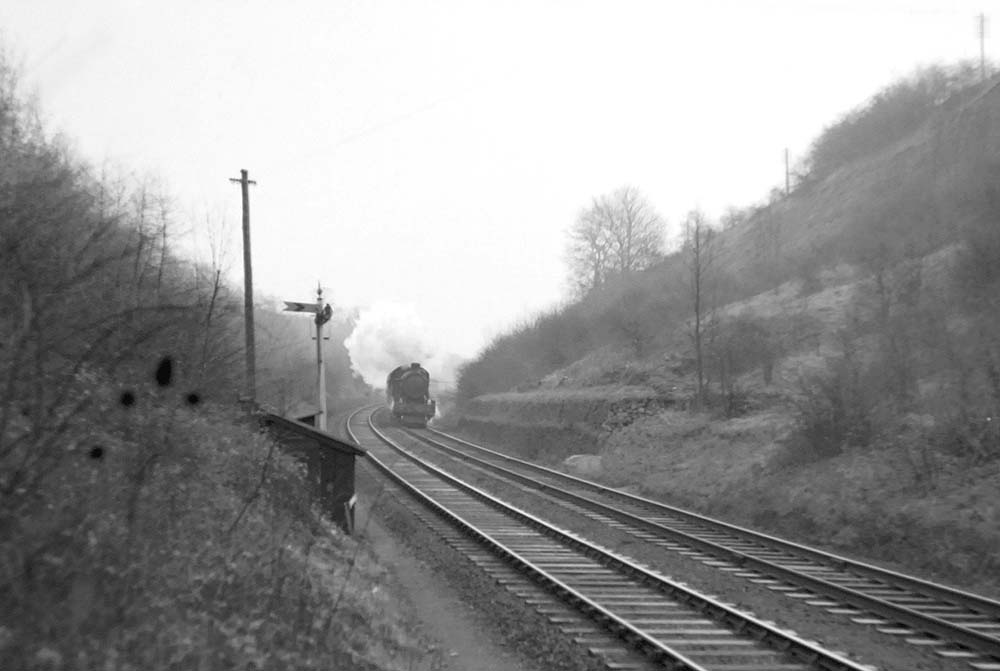|
|
 |
 |
|
GWR Route: Banbury to Wolverhampton
Harbury Cutting and Tunnel: gwrhc2521
 |
An unidentified ex-GWR Hall Class locomotive approaches the West
end of Harbury Tunnel on 9th February 1952. On the right can be seen the
results of engineering work where stone has been used to provide a stepped wall
in order to stablise the excavation and prevent the embankment from slipping on
the line. On the left adjacent to the signal is a Permanent Way hut which would
have been used to store materials used along the line. Just visible over the
roof is the sloping roof of a fogman's hut where the fogman would sit during
periods of poor visibility. He would be in telephone contact with the signal
box and would place detonators on the line, the number of which would advise
the driver whether to stop, proceed at caution, etc. Robert Ferris writes,
'A Fogsignalman was required at critical signals when fog or falling snow
meant the semaphore signals may not be visible to a train’s driver. They
were provided with coloured lamps, red, green and yellow flags and at least 36
detonators. The Fogsignalman was required to place detonators on the track and
replicate the position of the semaphore signals with their lamps and flags. At
facing junctions, when a secondary route was selected (without prior notice
being given to the train’s driver), the Distant signal was required to be
retained at Caution and the Fogsignalman would display a yellow light, exhibit
a yellow flag and place a detonator on the track (where there was ATC, two
detonators were placed 10 yards apart).'.
 back back

|
|
|
